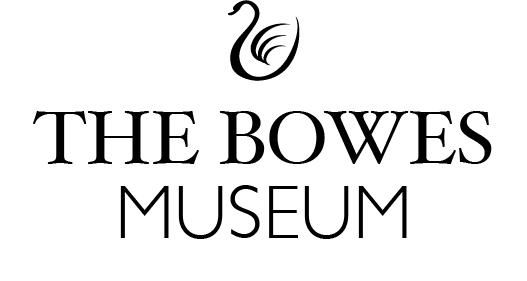
St Jerome
St Jerome was the son of a nobleman from the town of Stridon in the Roman province of Dalmatia. While still a youth, he travelled to Rome, where he displayed a flair for languages, becoming proficient in Latin, Greek, and Hebrew. At the age of 29 he was ordained as a cardinal in the church of Rome, and when Pope Liberius died, he was acclaimed to be worthy of the pontifical chair. Yet, having denounced several of his fellows for their promiscuity, he soon fell foul of their wrath. A famous episode describes how he awoke one morning to go to Mass and found a woman’s gown at his bedside, which he proceeded to don, blissfully unaware that his enemies had put it there so as to make it seem that he had spent the night fornicating with a woman.
Appalled at the folly of his fellows, Jerome travelled to Constantinople before spending four years in the solitude of the desert. While he was there, he passed his days punishing the flesh in order to beautify his soul, a process of deliberate or ascetic self-harming. Of particular note is how, when threatened by thoughts of pretty girls, he would raise a stone to his chest and beat it until the visions finally dispersed—an image that, as is the case with Puga’s painting, has become central to his iconography. Jerome thereafter travelled to Bethlehem, where he spent the remainder of his long life translating the Bible into Latin, producing the version known today as the Vulgate.
In Puga’s painting, the relative chronology of Jerome’s life is collapsed into a single narrative image. Having taken off his red cardinal’s hat, which now hangs on the wall behind him, the saint grips a crucifix in his left hand and the stone with which he would beat his chest in his right. With his eyes raised upwards towards heaven, the emphasis of the painting falls on the process of sublimation or transference—the vision of God in heaven used literally in order to smash thoughts of sex from his mind. The books on the table in front of him refer to his work as a translator while the skull beside it functions as a traditional memento mori or reminder of the inevitability of death and the futility of human endeavour.
The composition is completed by a lion that emerges out of the shadows on the right. Echoing the traditional folkloric assumption that the lion cub, having been born dead, would be raised to life after three days, it serves in part as an allusion to Christ and the promise of future resurrection. Its most notable function, however, is to recall an episode that took place during the final years of Jerome’s life, when a wounded lion entered his monastery only to be cured and employed thereafter as a beast of burden, serving as a guardian to an ass as it carried firewood from the forest.
Information about Antonio de Puga’s life and work is scarce. Born in Orense in Galicia in 1602, he was active in Madrid and was probably a pupil of the court painter Eugenio Cajés (1574/75–1634). A document dating from 1635 suggests that he painted the landscape background in two of Cajés’ battle-scenes—The Recapture of San Juan in Puerto Rico (Prado Museum) and The Marquis de Cadereyta Commanding an Armada (now lost)—commissioned by King Philip IV for the Hall of Realms at the Retiro Palace.
 Click to zoom and pan
Click to zoom and pan
...
Your feedback is very important to us. Would you like to tell us why?
We will never display your feedback on site - this information is used for research purposes.
Artwork Details
Title
St Jerome.
Artist
Antonio de Puga (Ourense, 1602 – Madrid, 1648).
Date
1636 (dated).
Medium and Support
Oil on canvas.
Dimensions
133.4 x 104.2 cm.
Marks and Inscriptions
Front lr ‘Antonio depuga f.b. Ano. 1636’.
Acquisition Details
Bequeathed by John and Joséphine Bowes, 1885.
Previous Owners
Purchased by John and Joséphine Bowes from the collection of the late Conde de Quinto, 1862, cat. no. 120, as by José de Ribera.
Institution
The Bowes Museum, Barnard Castle, B.M.69.
Bibliography
Juan Antonio Gaya Nuño, La pintura española fuera de España: historia y catálogo (Madrid: Espasa-Calpe, 1958), p. 272 (no. 2222);
Eric Young, Four Centuries of Spanish Painting: 17th June – 17th September 1967, The Bowes Museum, Barnard Castle, County Durham (Gateshead: Team Valley Printers, 1967), p. 41 (no. 48);
Eric Young, ‘Antonio Puga, his Place in Spanish Painting, and the Pseudo-Puga’, The J. Paul Getty Museum Journal, 3 (1976): 47–65;
María Luisa Caturla, Antonio de Puga, pintor gallego (A Coruña: Editorial Atlántico & Fundación Pedro Barrié de la Maza, Conde de Fenosa, 1982);
Eric Young, Catalogue of Spanish Paintings in the Bowes Museum, 2nd ed. (Middlesborough: The Bowes Museum, 1988), pp. 138–41;
Véronique Gerard Powell, ‘Spanish Paintings in the Bowes Museum’, in Spanish Art in County Durham, ed. Clare Baron & Andy Beresford (Bishop Auckland: Auckland Castle Trust, The Bowes Museum, & Durham University, 2014), p. 84;
Mercedes Cerón, ‘Saint Jerome’, https://vads.ac.uk/digital/collection/NIRP/id/27481/rec/1 [accessed: 11.07.22].
